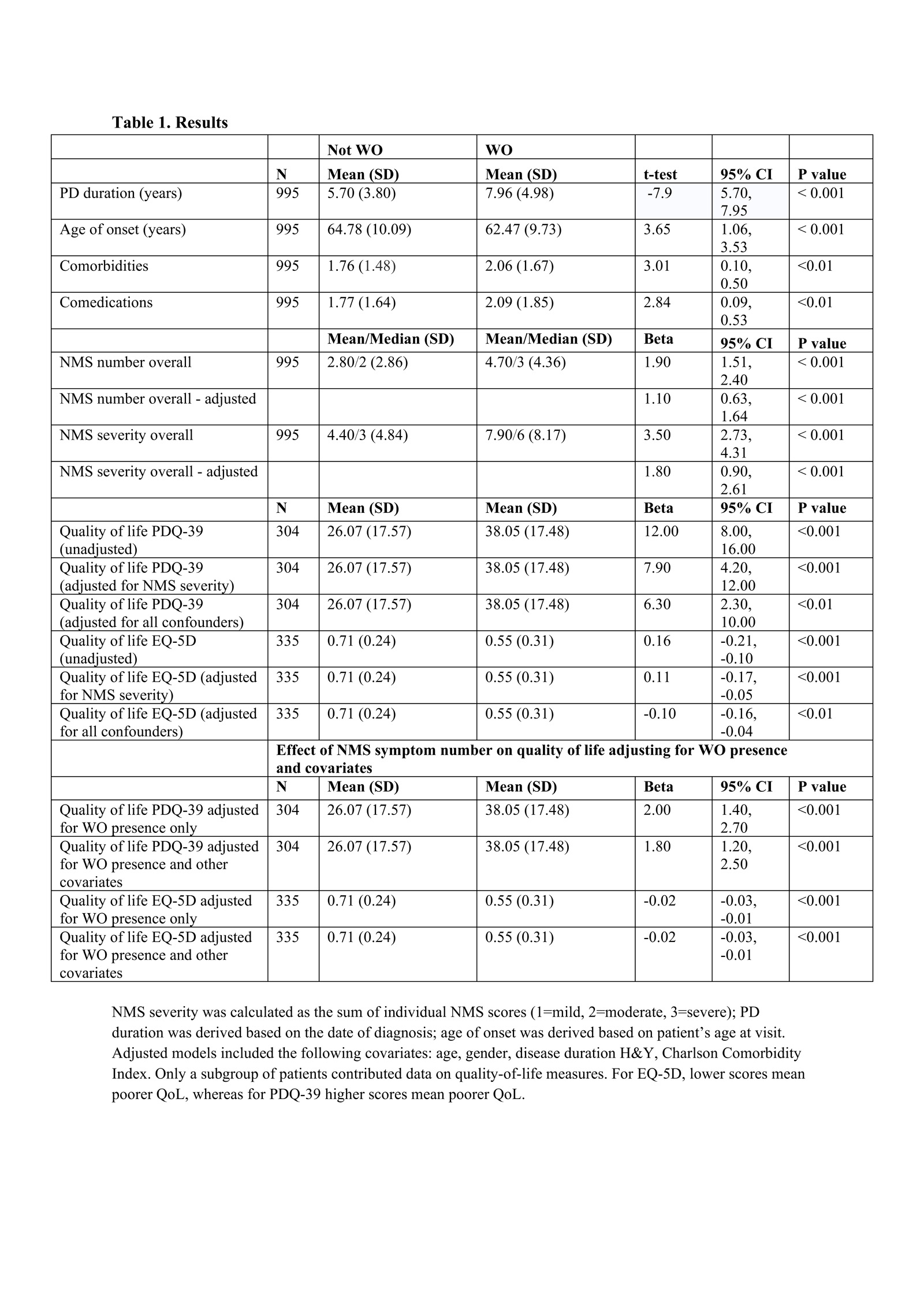Category: Parkinson's Disease: Non-Motor Symptoms
Objective: To estimate the frequency and severity of NMS and their impact on QoL among patients with moderate to advanced PD with WO episodes versus non-WO episodes.
Background: PD clinical burden and disease management have been typically associated with motor features and motor complications. The importance of NMS burden and impact on QoL requires proper assessment to enable better clinical management.
Method: This is a cross-sectional study using the Adelphi Parkinson’s Disease Specific Programme™, including data reported by neurologists on 4,029 PD patients, collected between June 2017 and June 2019 (EU5 and USA). Our study population included 995 patients with H&Y stage 2-4, at least 2 years PD duration, and treated with levodopa. Patients were grouped depending on whether they experienced WOs (N=458) or not (N=537). Frequency and severity of 26 NMS (comprising a variety of cognitive, neuropsychiatric, sleep, autonomic, and sensory dysfunctions) were described. Differences between WO and non-WO in QoL were performed for a subset of patients who filled out the QoL EQ-5D-5L (N=335) and PDQ-39 (N=304) questionnaires.
Results: Key results are presented in Table 1. Patients with WO had a younger age of onset, more comorbidities, more comedications, a higher number of NMS, and greater overall NMS severity than patients without WO. Differences between WO and non-WO groups in overall NMS frequency and severity remained statistically significant after adjusting for age, gender, disease severity and disease duration. Greater symptom severity in the WO group was observed for most individual NMS but after adjusting for covariates only differences in 10 NMS remained statistically significant. A higher number and severity of NMS predicted poorer QoL after accounting for WO presence and covariates. The presence of WO was associated with poorer QoL, and the effects remained significant after adjusting for NMS severity.
Conclusion: This study adds important knowledge about the burden of NMS and WO on QoL among patients with moderate to advanced PD. The added presence of WO is associated with even greater NMS burden and impact upon QoL. Beyond physically manifest motor symptoms of PD, WO presence could be considered as a clinical indicator of a more complex underlying disease state, reflecting greater NMS burden to be addressed in clinical practice.
To cite this abstract in AMA style:
P. Nasuti, A. Brailean, W. Ali, A. Gillespie, C. Vandeloo, M. Biagioni. The impact of wearing ‘OFF’ (WO) episodes on non-motor symptoms (NMS) burden and quality of life (QoL) in Parkinson’s disease (PD) patients [abstract]. Mov Disord. 2023; 38 (suppl 1). https://www.mdsabstracts.org/abstract/the-impact-of-wearing-off-wo-episodes-on-non-motor-symptoms-nms-burden-and-quality-of-life-qol-in-parkinsons-disease-pd-patients/. Accessed December 31, 2025.« Back to 2023 International Congress
MDS Abstracts - https://www.mdsabstracts.org/abstract/the-impact-of-wearing-off-wo-episodes-on-non-motor-symptoms-nms-burden-and-quality-of-life-qol-in-parkinsons-disease-pd-patients/

